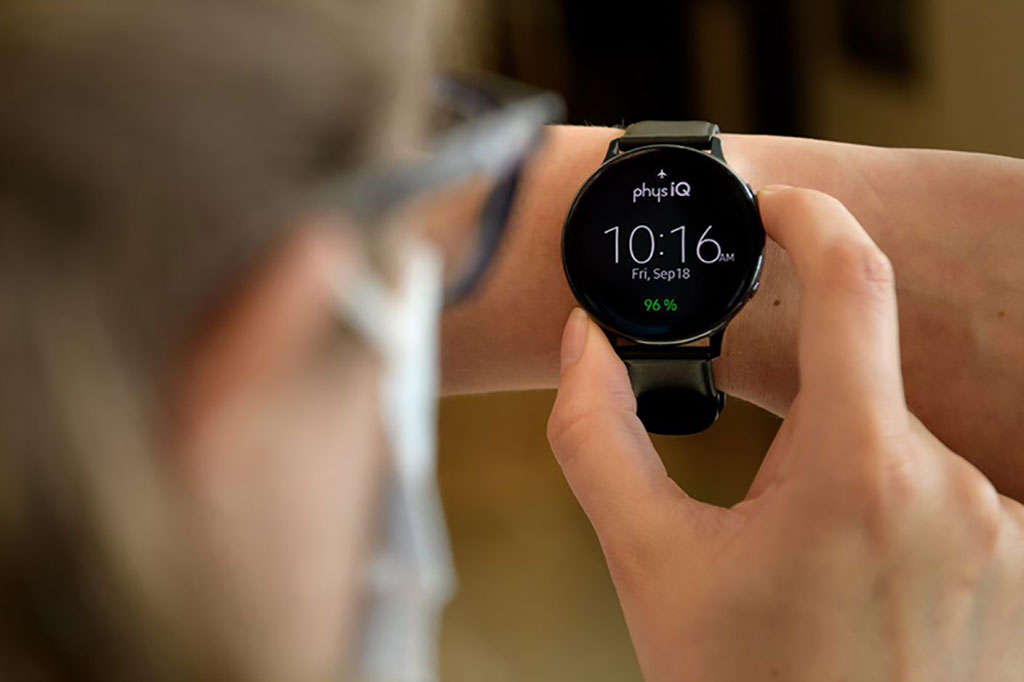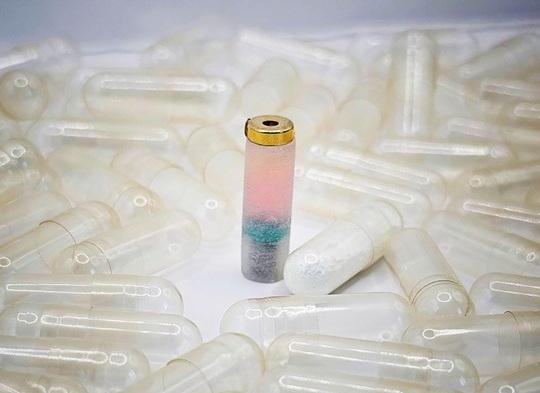Smartwatch-Based Algorithm Detects Early Signs of Viral Infections, Including COVID-19
|
By HospiMedica International staff writers Posted on 01 Nov 2021 |

Researchers have developed a smartwatch-based algorithm to detect early signs of viral infections, including COVID-19.
Purdue University (West Lafayette, IN, USA) and physIQ (Chicago, IL, USA) have announced the co-development of a viral detection algorithm for smartwatches. This innovation will be the result of a collaboration between physIQ and university engineers. The algorithm will be commercialized by physIQ, which develops solutions designed to improve health care outcomes by applying artificial intelligence (AI) to real-time physiological data from wearable sensors.
The research involved a study of 100 participants, including Purdue students, staff and faculty, to determine whether wearing a smartwatch to collect data was practical, unobtrusive and user-friendly. Each participant received a Samsung Galaxy smartwatch with a pre-loaded physIQ app to collect data. Along with the smartwatch, they also wore FDA-cleared adhesive chest-based biosensors to capture a single-lead electrocardiogram signal and multiple other parameters for five days of continuous monitoring. The researchers then analyzed data from the app remotely using physIQ's cloud-based accelerateIQ platform.
Data from the chest patches were processed by physIQ's U.S. Food and Drug Administration-cleared AI-based algorithms in deriving heart rate, respiration rate and heart rate variability. These data served as "gold standard" references to compare with data from the smartwatches. The viral infection detection algorithm complements physIQ's other health care applications. The goal across all of physIQ's applications is the ability to characterize dynamic human physiology over time, whether it is for assessing the efficacy of a new therapy, safety monitoring during treatment or general wellness.
"Smartwatches are well-suited for the detection of early viral infection, including COVID-19," said Craig Goergen, Purdue's Leslie A. Geddes Associate Professor of Biomedical Engineering, who led the research. “Infections can happen at any time, making the continuously tracked data available through an individual's smartwatches uniquely suited to identify the earliest signs of illness. In particular, knowledge of a person's usual heart rate and respiratory during sleep and activity over long periods of time is especially valuable for detecting subtle changes from normal.”
"The algorithms for enabling early detection are built off physiological features derived from the biosensor data collected by the smartwatches," said Stephan Wegerich, physIQ's chief science officer. "Generating accurate and robust physiological features forms the input to subsequent viral detection algorithms. This requires the development of sophisticated signal processing and machine learning algorithms. Combined, these make the most out of smartwatch biosensor data, which is a big part of our collaboration with Purdue."
Related Links:
Purdue University
physIQ
Latest COVID-19 News
- Low-Cost System Detects SARS-CoV-2 Virus in Hospital Air Using High-Tech Bubbles
- World's First Inhalable COVID-19 Vaccine Approved in China
- COVID-19 Vaccine Patch Fights SARS-CoV-2 Variants Better than Needles
- Blood Viscosity Testing Can Predict Risk of Death in Hospitalized COVID-19 Patients
- ‘Covid Computer’ Uses AI to Detect COVID-19 from Chest CT Scans
- MRI Lung-Imaging Technique Shows Cause of Long-COVID Symptoms
- Chest CT Scans of COVID-19 Patients Could Help Distinguish Between SARS-CoV-2 Variants
- Specialized MRI Detects Lung Abnormalities in Non-Hospitalized Long COVID Patients
- AI Algorithm Identifies Hospitalized Patients at Highest Risk of Dying From COVID-19
- Sweat Sensor Detects Key Biomarkers That Provide Early Warning of COVID-19 and Flu
- Study Assesses Impact of COVID-19 on Ventilation/Perfusion Scintigraphy
- CT Imaging Study Finds Vaccination Reduces Risk of COVID-19 Associated Pulmonary Embolism
- Third Day in Hospital a ‘Tipping Point’ in Severity of COVID-19 Pneumonia
- Longer Interval Between COVID-19 Vaccines Generates Up to Nine Times as Many Antibodies
- AI Model for Monitoring COVID-19 Predicts Mortality Within First 30 Days of Admission
- AI Predicts COVID Prognosis at Near-Expert Level Based Off CT Scans
Channels
Critical Care
view channel
AI Heart Attack Risk Assessment Tool Outperforms Existing Methods
For decades, doctors have relied on standardized scoring systems to assess patients with the most common type of heart attack—non-ST-elevation acute coronary syndrome (NSTE-ACS). The GRACE score, used... Read more
'Universal' Kidney to Match Any Blood Type
Blood-type incompatibility has long been one of the greatest obstacles in organ transplantation, forcing thousands of patients—particularly those with type O blood—to wait years longer for compatible donors.... Read moreSurgical Techniques
view channel
Minimally Invasive Endoscopic Surgery Improves Severe Stroke Outcomes
Intracerebral hemorrhage, a type of stroke caused by bleeding deep within the brain, remains one of the most challenging neurological emergencies to treat. Accounting for about 15% of all strokes, it carries... Read more
Novel Glue Prevents Complications After Breast Cancer Surgery
Seroma and prolonged lymphorrhea are among the most common complications following axillary lymphadenectomy in breast cancer patients. These postoperative issues can delay recovery and postpone the start... Read morePatient Care
view channel
Revolutionary Automatic IV-Line Flushing Device to Enhance Infusion Care
More than 80% of in-hospital patients receive intravenous (IV) therapy. Every dose of IV medicine delivered in a small volume (<250 mL) infusion bag should be followed by subsequent flushing to ensure... Read more
VR Training Tool Combats Contamination of Portable Medical Equipment
Healthcare-associated infections (HAIs) impact one in every 31 patients, cause nearly 100,000 deaths each year, and cost USD 28.4 billion in direct medical expenses. Notably, up to 75% of these infections... Read more
Portable Biosensor Platform to Reduce Hospital-Acquired Infections
Approximately 4 million patients in the European Union acquire healthcare-associated infections (HAIs) or nosocomial infections each year, with around 37,000 deaths directly resulting from these infections,... Read moreFirst-Of-Its-Kind Portable Germicidal Light Technology Disinfects High-Touch Clinical Surfaces in Seconds
Reducing healthcare-acquired infections (HAIs) remains a pressing issue within global healthcare systems. In the United States alone, 1.7 million patients contract HAIs annually, leading to approximately... Read moreHealth IT
view channel
Printable Molecule-Selective Nanoparticles Enable Mass Production of Wearable Biosensors
The future of medicine is likely to focus on the personalization of healthcare—understanding exactly what an individual requires and delivering the appropriate combination of nutrients, metabolites, and... Read moreBusiness
view channel
Philips and Masimo Partner to Advance Patient Monitoring Measurement Technologies
Royal Philips (Amsterdam, Netherlands) and Masimo (Irvine, California, USA) have renewed their multi-year strategic collaboration, combining Philips’ expertise in patient monitoring with Masimo’s noninvasive... Read more
B. Braun Acquires Digital Microsurgery Company True Digital Surgery
The high-end microsurgery market in neurosurgery, spine, and ENT is undergoing a significant transformation. Traditional analog microscopes are giving way to digital exoscopes, which provide improved visualization,... Read more
CMEF 2025 to Promote Holistic and High-Quality Development of Medical and Health Industry
The 92nd China International Medical Equipment Fair (CMEF 2025) Autumn Exhibition is scheduled to be held from September 26 to 29 at the China Import and Export Fair Complex (Canton Fair Complex) in Guangzhou.... Read more
















